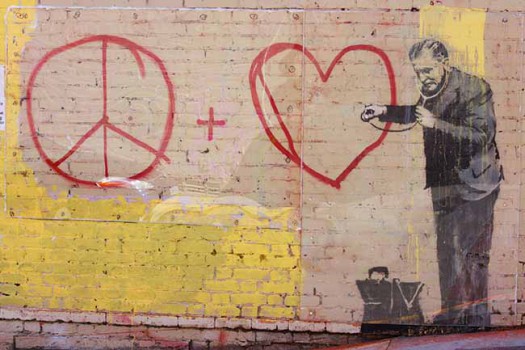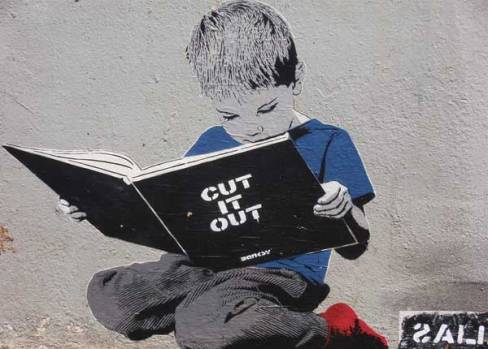By Paul Hemsley
Vandals caught defacing public and private property could soon be forced to scrub off their own unsightly mess under a hands-on aversion therapy plan by the Queensland government that will let local governments pressgang offenders into the role of council cleaners.
The plan to force taggers to erase either their efforts or that of their spray can rivals is the latest effort in a part of wider crackdown to rein in the cost of defacement of walls, fences and train tunnels that the Australian Institute of Criminology (AIC) conservatively estimates generates a bill of $1.5 billion a year across Australia.
While councils in New South Wales have recently turned to mobile technology using apps like VandalTrak that allow communities to report instances of graffiti so that a geographic profile of perpetrators can be created, the Queensland government has taken a more rudimentary approach that will put the vandals back armed with a scrubbing brush as punishment.
The plan follows state Attorney-General Jarrod Bleijie’s proposed changes to the Youth Justice Act 1992 and the Police Powers and Responsibilities Act 2000, which is expected to give councils the ability to use offenders aged between 12 and 15 to remove graffiti in their own communities.
Youths who are charged or admit to a graffiti related offence will be diverted by authorities to the graffiti removal program as a result of the Criminal Law Amendment Bill 2012, which will bring in the changes to the two Acts.
While the diversion scheme has rather obvious ‘old-school’ populist appeal, one systemic benefit is that it can potentially help unclog the stretched court system by finding an alternative avenue to the conventional path of prosecution and convictions.
According to the Queensland government, the programs will be run in conjunction with Youth Justice Services and up to $50,000 from the ongoing GraffitiSTOP program will be set aside to pay for the supervisors in areas where graffiti removal programs aren’t present.
Queensland Minister for Local Government, Community Recovery and Resilience David Crisafulli said graffiti vandals show a “blatant disrespect” for public property and “should be made to clean up their mess”.
“The people of our towns and cities deserve better than to have their community facilities, such as parks, recreation halls and cycleways, trashed,”Mr Crisafulli said.
He said the state government’s plan will have young offenders take responsibility for their actions by removing their “dirty work” under the supervision of local councils and community groups.
“We are determined to end the softly, softly approach of letting juvenile offenders off with little more than a slap on the wrist,” Mr Crisafulli said.
Councils have been active in their campaigns to fight graffiti crime but have had to either treat the symptoms by using mobile apps to aid in the clean-up job, as well as surveillance schemes such as CCTV, which has already been done by Brisbane City Council, which has spent more than $15 million on graffiti removal since 2009.
Brisbane Lord Mayor Graham Quirk welcomed the state government’s proposal by noting that it would complement the city’s other graffiti “deterrents” it had already implemented including CCTV cameras, and its Taskforce Against Graffiti (TAG) joint initiative with the Queensland Police Service and Crimestoppers.
But independent experts have given perspectives that differ on whether the Queensland government’s scheme can be an avenue for rehabilitation for the young drafted graffiti offenders.
AIC Crime Prevention and Criminal Justice Responses principal research analyst, Anthony Morgan said if the government’s plan is about using people to clean up the graffiti and simply not having to pay someone, it “certainly helps in terms of perceptions”.
However Mr Morgan was skeptical that such measures “in rehabilitating people and stopping them from going out and committing more graffiti crimes or as an intervention to stop people from graffiti” are capable of rehabilitating the vandals who have been forced to participate in the clean-up jobs.
“There’s probably not a whole lot of support for it but that’s not to say that it doesn’t have its positives in terms of improving peoples’ perceptions of space,” Mr Morgan said.
However the Australian community organization Youth Off the Streets has offered a more optimistic and forgiving perspective from its founder and chief executive officer Father Chris Riley, who told Government News that the proposed changes to the Acts by the Queensland government is a step towards rehabilitation of “troubled young people”.
“However it should not be the only step,” Father Riley said.
Father Riley cited graffiti as a “symptom of a bigger problem” and recommended that courts look at rehabilitation instead of incarceration.
He recommended that young people who have been found doing graffiti should be ordered to attend compulsory counseling and to participate in “restorative justice” – where a perpetrator faces the “impact of their actions” by meeting their victim and “hearing firsthand the anguish they have caused”.
Comment below to have your say on this story.
If you have a news story or tip-off, get in touch at editorial@governmentnews.com.au.
Sign up to the Government News newsletter


